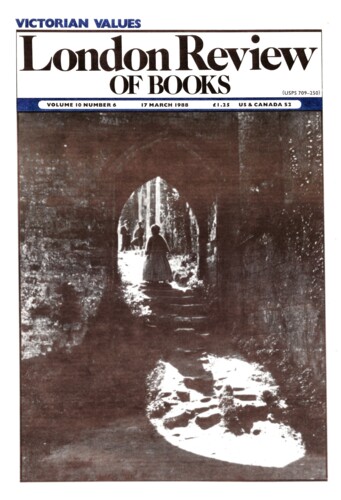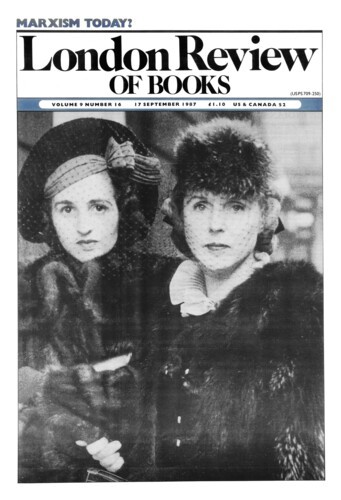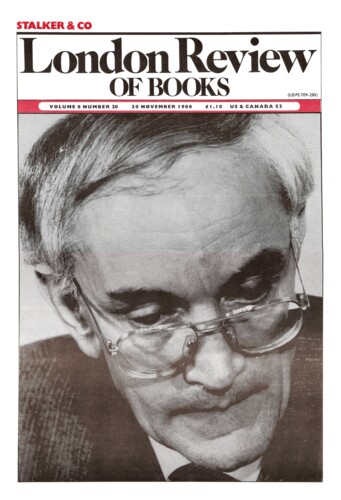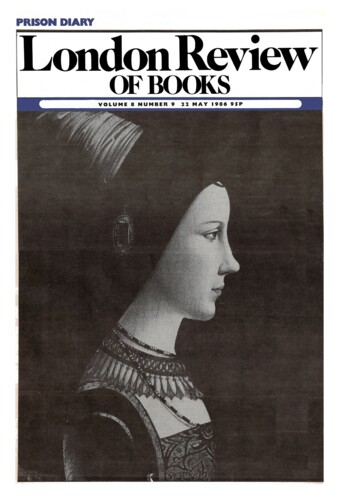Clean Clothes
Rosalind Mitchison, 17 March 1988
The Kelsalls and Davidoff and Hall are worker pairs who have been looking into the family life of a restricted group over a halfcentury or so, using a wide range of the documentation generated by their subjects. Both groups studied were experiencing insecurity. The Scottish families were of landed class, made insecure by sudden changes in politics and in the control and policy of the Church; the English families a century later were of the emerging middle class, busy creating niches in the professions and in the world of manufacturing business. Both sets were, as things turned out, upwardly mobile, the Scottish family of the Homes of Polwarth ending up as earls of Marchmont, the English families establishing what are now household names of useful products – Reckitt, Ransome, Cadbury, Bird, Courtauld. Success could not be foreseen: the promise was not sure, and false steps were dangerous. The threat of trial and execution for treason, which was an elastic concept in Stuart Scotland, forced the Homes into a period of near-penniless exile: the ladders of upward mobility for the new middle class were associated with many snakes – risks of bankruptcy or of relegation to the ranks of manual labour. Failures had to leave a world with a carefully constructed ethos, and become part of the general mass of non-persons. But political revolution enabled the Homes to become part of a new aristocracy in the opening years of the 18th century, joining others newly ennobled such as the Roseberys and the Stairs. A century later, economic success gave permanence to the families making new household aids.





